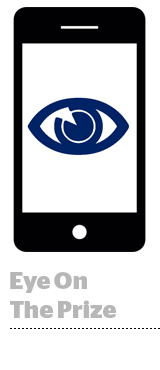 With desktop viewability measurement and the invalid traffic detection and filtration situation starting to get under control, the Media Rating Council is focusing its attention on mobile in 2016.
With desktop viewability measurement and the invalid traffic detection and filtration situation starting to get under control, the Media Rating Council is focusing its attention on mobile in 2016.
”We’re getting pretty close here,” said Ron Pinelli, VP of digital research and standards at the MRC, speaking at a town hall meeting on the state of digital measurement hosted by the Interactive Advertising Bureau on Thursday.
The MRC issued an update on its progress around mobile viewability in November, and the goal is to have a document ready for public circulation by the end of Q1 2016.
But a bunch of issues need to be resolved before the council can release guidelines for public commentary.
For one, the mobile feed environment – and the way in which consumers interact with it – is very different from desktop-based content consumption.
And is a person’s cognitive experience on mobile different from desktop? It’s a key conceptual question that needs answering, said David Gunzerath, SVP and associate director at the MRC.
Another thorny issue to consider: Does it make sense for the MRC to back a software development kit or an API-based measurement solution? There are pros and cons to both. With an API, the data flow is in the hands of the publisher, which could make buyers uncomfortable – but it’s highly scalable. SDKs are generally created by third parties, which could make them more independent, but publishers are highly reticent to integrate new SDKs into their apps – and that could create a scale problem.
It’s also unclear how much of a mobile ad should be in view in order for it to be considered viewable. For the moment, interim guidance on mobile viewable impression measurement issued in May employs the same parameters for in-app and the mobile web as those used for desktop: 50% of pixels in view for one second for display and two seconds for video.
And then there’s the fact that it can often take longer to render ads on mobile devices than on desktop, which ties directly into the consumer experience problem. Vendors have to be in constant communication with their tags in order to determine whether an ad was in view or not, and that chews up data and power.
“That’s not a big concern on desktop, but on mobile it is,” Gunzerath said. “If we start draining people’s batteries because we’re trying to measure for viewability on their phone, that’s an issue. We don’t want to degrade user experience for the sake of viewability measurement.”
But one thing is certain – the MRC won’t consider anyone for mobile accreditation that can’t handle both mobile web and in-app measurement. For the moment, Moat is the only vendor accredited for mobile, but when the new guidelines are ready in a few months, Moat is going to have to be reviewed again to ensure it’s still in compliance.
The MRC is also considering the implications of mobile beyond just viewability.
“We’re talking about integrating mobile measurement across all digital measurement,” Pinelli said, noting that the MRC is going to be working with the IAB to update existing measurement guidelines to account for mobile.
Take the IAB’s Click Measurement Guidelines, which were first developed in 2004, followed by an addendum in 2009. The document provides guidelines around when to count a click and which clicks should be considered valid and/or fraudulent, as well as ground rules on filtration, auditing and reporting. But what doesn’t get a mention is mobile and all the related nuances therein, like how to handle taps and swipes.
“[We] need to integrate mobile into everything,” said George Ivie, CEO and executive director of the MRC. “Mobile is a really serious technology wave and it’s already overtaken us.”
Beyond mobile, the MRC is also looking to make progress on cross-platform measurement and audience measurement currency projects, which will require reconciling digital measurement with how measurement is done on TV, radio and elsewhere, as well as figuring out a way to dedupe for reach while also accounting for frequency.
It’s a lot to bite off, but the MRC is a willing glutton for punishment.
“If you think viewability was disruptive, viewability to a human with audience targeting characteristics is even more disruptive,” Ivie declared.














